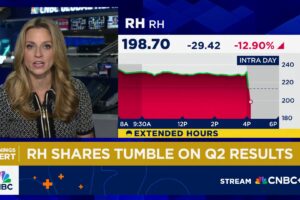
U.S. Treasury yields struggled for direction Wednesday while Joe Biden was inaugurated as U.S. President, leaving investors to turn their focus on his administration’s priorities.
What are Treasurys doing?
The 10-year Treasury note yield TMUBMUSD10Y, 1.091% fell 0.3 basis point to 1.089%, while the 2-year note rate TMUBMUSD02Y, 0.129% was down 0.2 basis point to 0.129%. The 30-year bond yield TMUBMUSD30Y, 1.831% added 0.2 basis point to 1.841%.
What’s driving Treasurys?
Biden was inaugurated on Wednesday, calling an end to President Donald Trump’s tenure in the White House. His new administration’s priorities are being closely eyed by bond traders looking to see if his policies could heat up reflationary pressures in the U.S. economy.
See: Biden aims for best stock-market rally in 92 years ahead of inauguration
Yet the earlier bond market selloff this month, sparked by fiscal stimulus fears, has struggled to gain momentum. Markets are now showing signs of consolidating, with the 10-year Treasury yield hanging around 1.10%.
Indeed, bond-market trading on Wednesday remained listless, despite a sharp rise in U.S. equities that sent major benchmarks to all-time highs.
An auction for $24 billion of 20-year bonds drew tepid demand, but did not stimulate much market movement. Recent long-dated Treasury auctions have seen strong bidding from bond buyers who looked to take advantage of the recent yield surge.
In U.S. economic data, the National Association of Home Builders index of housing market activity fell by 3 points to 81 in January.
What did market participants say?
“We cannot escape the sense that all of the pro-growth and reflationary upside has been effectively brought forward and traded during the first 20-days of the year; leaving the market in the precarious position of requiring additional bearish inputs to justify the current level of Treasury yields,” said Ian Lyngen, head of U.S. rates strategy at BMO Capital Markets.



